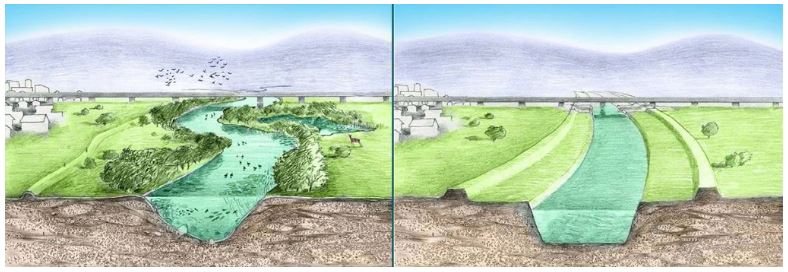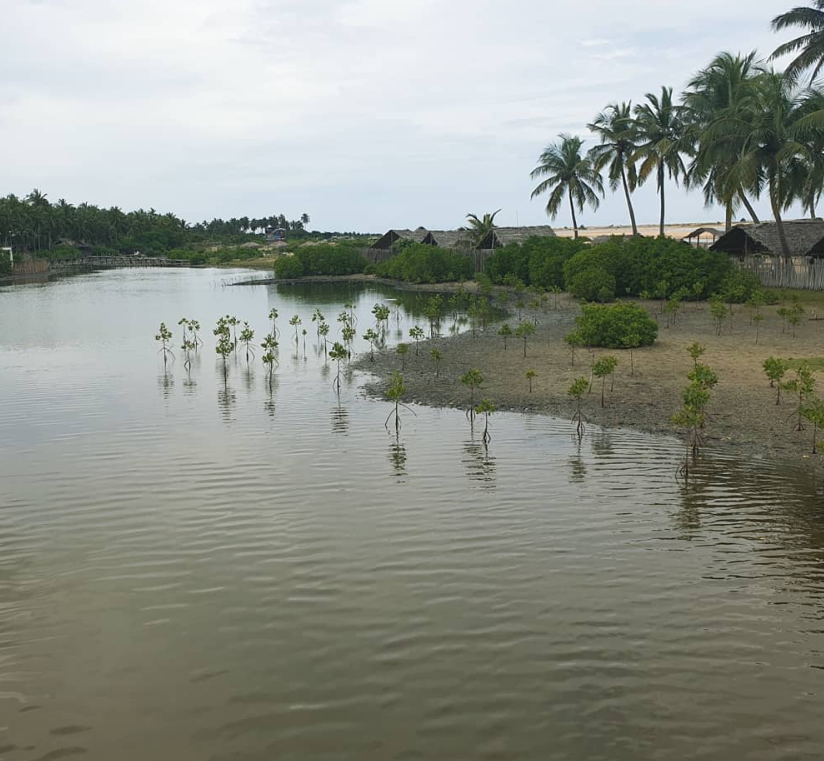Ecosystem-based solutions or eco-solutions help us to deal with societal challenges. Considering only the financial costs and benefits of these solutions is not enough to understand the effectiveness of these ingenious approaches. Before replicating and scaling up, we also need to ensure they meet social and environmental objectives and as a minimum does no harm.
In the first installment of this blog series, we discussed the wide range of costs and benefits we get from eco-solutions to address different societal challenges, like climate change, disaster risks, and poverty. In recent years, we have also seen increasing recognition of eco-solutions at national and global levels. Just to remind ourselves, eco-solutions or nature-based solutions (NbS) are the actions or approaches we take to deliberately use ecosystem services to solve our problems as well as to enhance our wellbeing and conservation efforts.
Harnessing eco-solutions for impact at scale
Despite their benefits and recognitions, replication and scaling up of ingenious eco-solutions to reach wider communities remains a challenge. Before scaling up, all innovations or ingenious solutions, like eco-solutions, need to pass through several stages — problem identification, idea generation, and piloting. Scaling up of an innovative solution on the ground may face a number of barriers, including insufficient funding, limited support, lack of interest, inadequate leadership or lack of expertise to implement — all interacting in the community development space.
But, how to choose a solution for scaling up when a range of options are available? How to convince a donor, a government, or a community why ecosystem-based solutions are better than the usual grey infrastructure?
One way to build a case is to show its effectiveness. This is often simplistically reduced to — how much it costs and what economic benefit it brings? This type of analysis is dominant in conventional decision making, so eco-solutions must also pass this test.
 Comparison between a eco-solution (left) and more traditional infrastructure approach (right).
Comparison between a eco-solution (left) and more traditional infrastructure approach (right).
On a local scale, benefit-cost ratio (BCR), for example, for a grey-green flood protection structure (bioengineering) in Kaski district of Nepal was estimated to be 1.6 over a period of time. A recent study has calculated BCR of 1.43 for raising seedlings on floating agriculture beds in Pirojpur district of coastal Bangladesh.
On a global scale, a recent study estimated that the world’s mangroves give us global flood protection benefits worth more than US$ 65 billion per year. More specifically speaking, 20-km stretches of mangrove, particularly near cities, provide protection of more than US$ 250 million annually, the study found.
Seeing beyond the financial impacts of eco-solutions
While economic cost and benefit is important to help select a solution, it must not be the only criterion that matters. As bio-dykes for flood protection facilitated by Practical Action in Nepal have shown, in many a cases eco-solutions are actions that communities can do without external technical support and investment. This isn’t reflected in the BCR and so often overlooked when solutions are being compared.
Interestingly some recent work highlights that different people view the cost and benefits of possible solutions in different ways. A case study by Practical Action’s partner SLYCAN Trust in Sri Lanka showed that communities living adjacent to mangrove forests do not appreciate the flood retention value of the mangroves in the same way as the people living further inland. To the adjacent communities, the value of livelihoods and tourism benefits from the mangrove are much greater than the coastal flooding benefits. This is largely because this is something that they are familiar with and something they assume they need to deal with as part of their day to day lives.

Practical Action’s partner RECOFTC facilitated a women-led community forest user group in southern Nepal to install an eco-solution against flash floods. A live “bamboo wall” combined with plantation and gabion wall saved the village during devastating 2017 floods. While the annual economic benefit from this solution was estimated to be three times more than the initial cost, the solution also brought immense social impacts — women-led implementation of a nature-based solution where men also joined in, increased social cohesion among the villagers, and increased protection for the most marginalized section of the society. The intervention also influenced the adjacent local government authorities, community-based organizations, and adaptation projects to adopt nature-based approaches for flood protection in their communities.
It is therefore vital to understand that the costs, benefits, trade-offs, and opportunities an eco-solution offers to a community do have strong social and environmental dimensions. So we need to consider these if we are to bring the communities fully into the decision making process. In a follow-up post, we will explore the possibility of developing a tool to effectively measure the comprehensive costs and benefits of eco-solutions.
This is the second in a series of blogs that was launched on 22 May 2020: International Day of Biological Diversity. You can read the first entry here.
Intro image credit belongs to SLYCAN Trust. Image source.

Comments